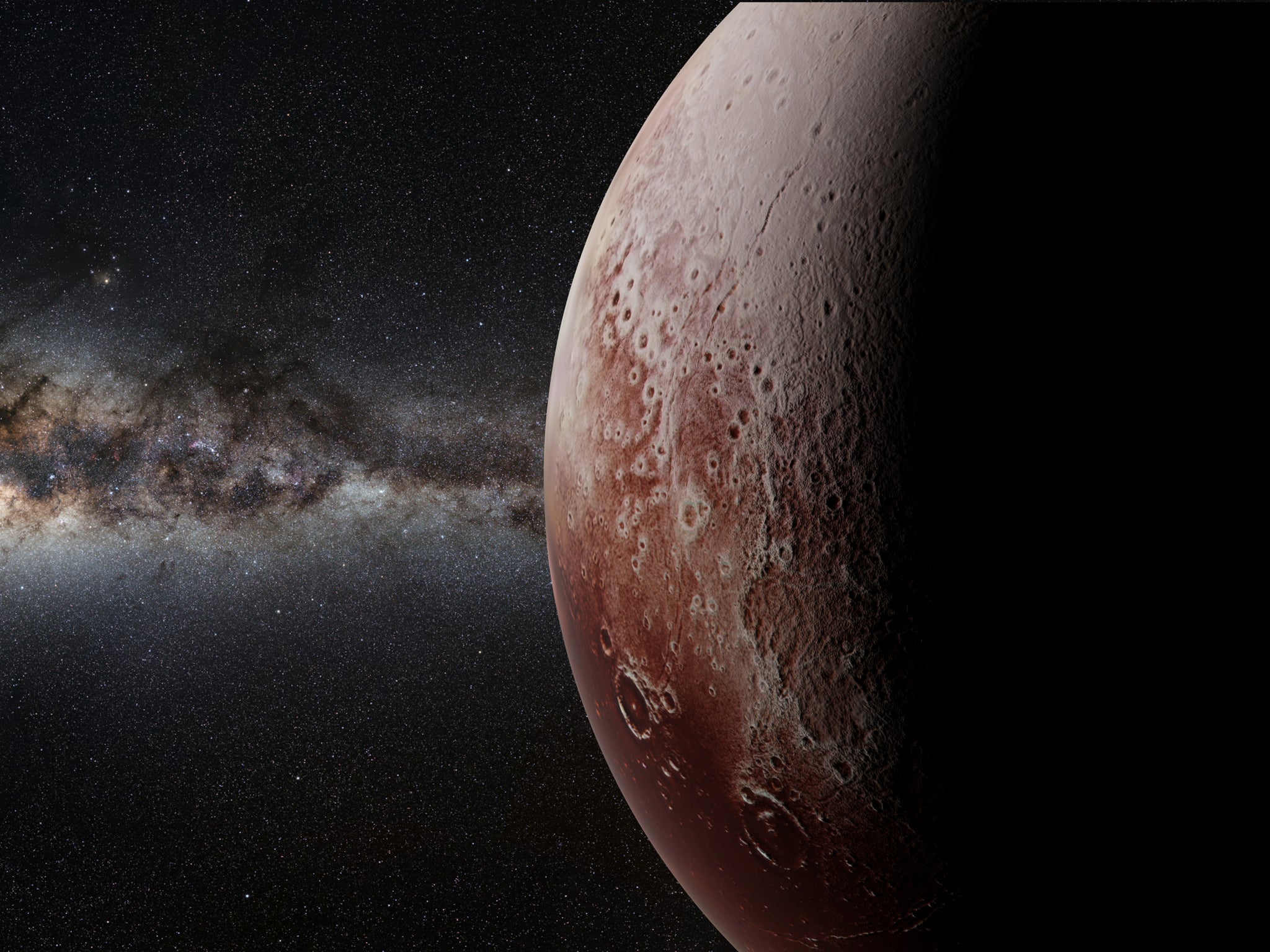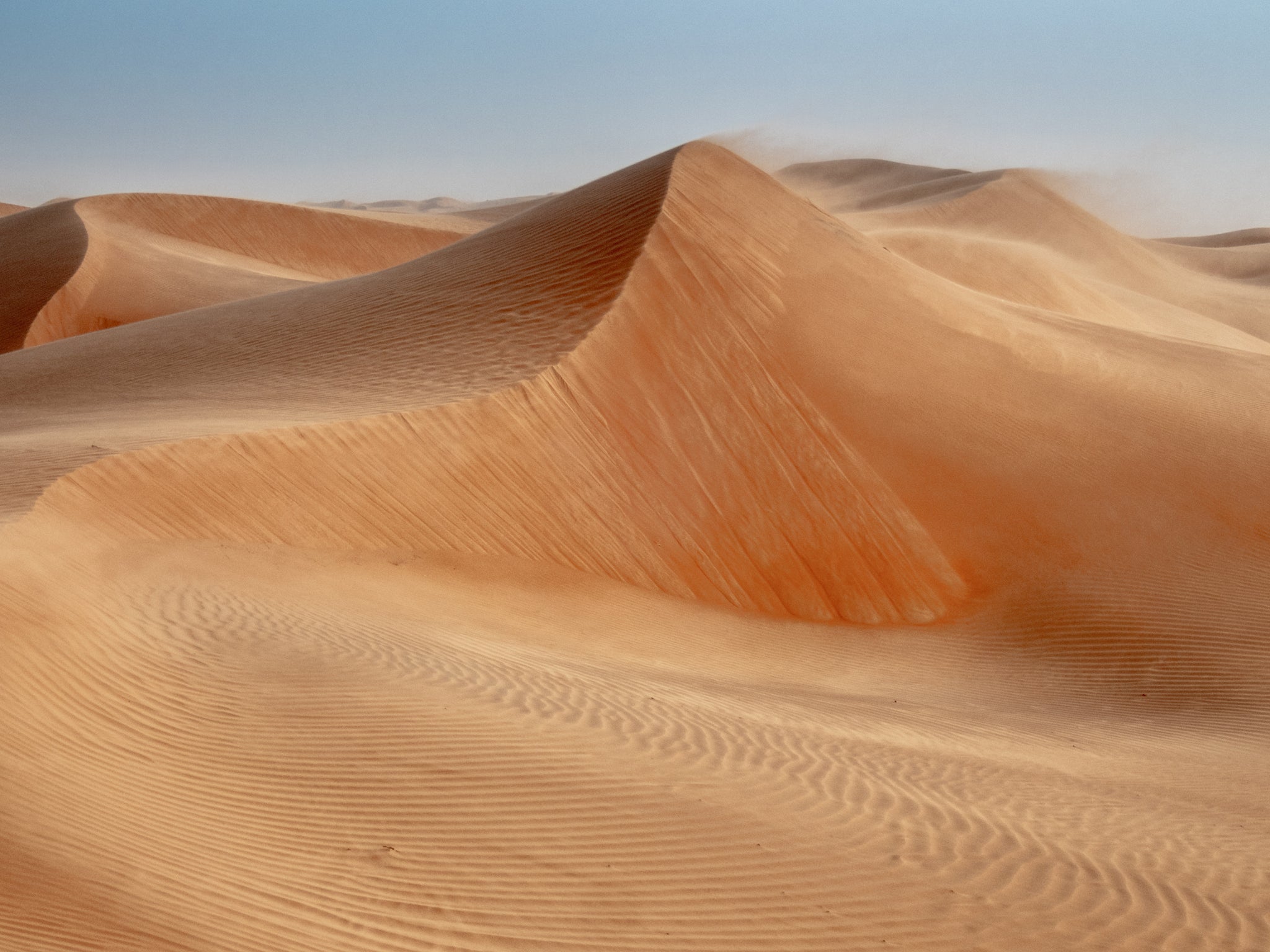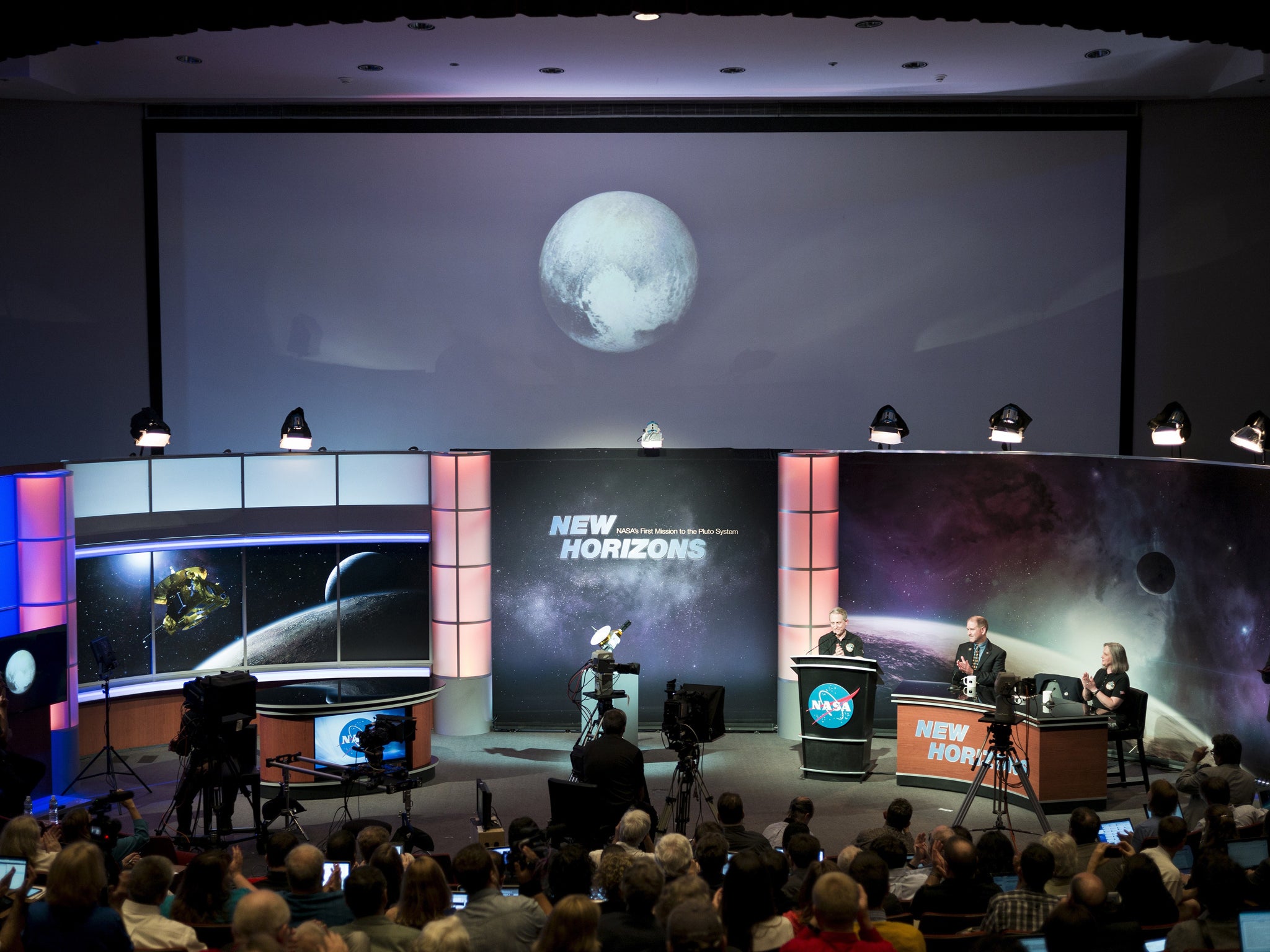Icy dunes on Pluto: spacecraft reveals new details about planet’s surface
Images from New Horizons spacecraft provide more evidence about the surface of Pluto

Your support helps us to tell the story
From reproductive rights to climate change to Big Tech, The Independent is on the ground when the story is developing. Whether it's investigating the financials of Elon Musk's pro-Trump PAC or producing our latest documentary, 'The A Word', which shines a light on the American women fighting for reproductive rights, we know how important it is to parse out the facts from the messaging.
At such a critical moment in US history, we need reporters on the ground. Your donation allows us to keep sending journalists to speak to both sides of the story.
The Independent is trusted by Americans across the entire political spectrum. And unlike many other quality news outlets, we choose not to lock Americans out of our reporting and analysis with paywalls. We believe quality journalism should be available to everyone, paid for by those who can afford it.
Your support makes all the difference.When Clyde Tombaugh discovered Pluto in 1930, he could not have known that he was opening a whole field of science that is only now coming into its own: the study of planetary landscapes – or comparative planetary morphology.
Since the announcement of Pluto’s discovery, the body has been a subject of much speculation: even from the very start, its designation as a planet was a matter of controversy.
Now a new study, published in the journal Science, adds to what we know about this body: that it has icy dunes, making it another planetary object, like Earth and Mars, with a surface that has been transformed by wind and weather.
Pluto’s existence at the edge of the known solar system led to questions of its composition: there was early recognition that methane was a significant component of Pluto but was it mainly composed of ice and gas like its nearest neighbour Neptune? Or was it rocky?
It was not until 1994, when the Hubble Space Telescope took the first direct images of Pluto that any compositional variation across the planet could be seen – and even then the question of what it was made up of was not resolved.
Now, though, thanks to the spectacular images returned by the New Horizons spacecraft that flew past Pluto in 2015, we know that, far from being a dreary and undistinguished body, Pluto is a lively and active object that displays a fantastic variety of landscapes.
The recent study of results from New Horizons indicates that there is a field of dunes at the edge of Pluto’s largest plain, Sputnik Planitia.
This is a significant discovery, because dunes are only produced when specific conditions occur, and recognition of these conditions on Pluto suggests that the minor planet might be much more active than previously envisaged.
So what are the particular environmental parameters required to produce dunes? Think of sand dunes on Earth: they are hills of sand built and shaped by wind. They demonstrate two of the things that are required to make dunes: grains (of sand, or dust or, as in Antarctica, ice) and wind.
On Earth, we have a rich variety of dunes dependent on the composition and size of the grains and the strength and direction of the wind.
Sastrugi – parallel wave-like ridges caused by winds on a hard snow surface; barchan – crescent mounds that tend to be wider than they are long; and seif – linear dunes with two slip faces, are just three of the very different types of dune that are found on Earth.
A third factor important in the construction of dunes is the ability of the grains to be moved by the wind. This requires the grains to be entrained in the wind – if grains are compressed and consolidated, as would be the case in a deeply frozen or solid rocky surface, then they cannot readily be transported.
Identification of the dunes on Pluto has shown that icy grains must be transportable across the planetary surface, so there must be a mechanism to lift the grains into the thin wind that blows over Pluto’s smooth and icy plains.

The authors of the study suggest that sublimation – where ice transforms directly into gas – of the icy surface allows grains to escape and be carried by the wind to subsequently be deposited as dunes.
Understanding of the mechanism then begs the question: what are the grains made from? Clearly, they are not of sand, as are the dunes of the Sahara, or even of water ice, as they are in Antarctica.
Modelling of environmental conditions on Pluto shows that although the sunlight that falls on Pluto’s surface is much weaker than on Earth, it is still sufficient to cause ice at and just below the surface to sublime.
The ice is a mixture of nitrogen, carbon monoxide and methane; according to the model, methane is still solid as nitrogen vaporises, and so grains of methane ice are thrown from the surface to be caught by the wind.
One of the most interesting aspects of the research is the implications it has for the study of other planetary surfaces. We are used to seeing dunes on different bodies – Earth, Mars, Titan (Saturn’s largest moon), and now Pluto.

These dunes may have similar shapes, but are produced by slightly different processes, depending on the environmental conditions of the body in question.
Comparative planetary morphology – the ability to compare surface landscapes on different bodies and infer the processes that produced them – is a science that has grown alongside the number of planets that has been explored.
It leads us to wonder about the surfaces of the planets that orbit stars beyond the sun. At the moment, we cannot observe exoplanetary surfaces – but one day, we will.
And we will probably see dunes, river valleys and mountains, just as we do within the solar system. Comparative planetary morphology will be the key that helps us decipher how these planets have formed and evolved.
Debate may still continue about the kind of body Pluto is but we know now that Pluto is dark, cold and windy – characteristics it may share with its namesake, the Roman god of the Underworld.
is a professor of planetary and space sciences at The Open University. This article was originally published on TheConversation.com
Join our commenting forum
Join thought-provoking conversations, follow other Independent readers and see their replies
Comments